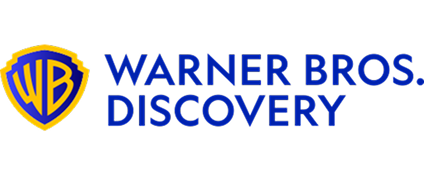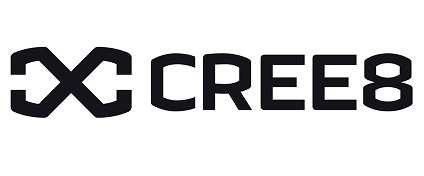Building a Global Entertainment Network: A 2025 Strategic Guide

Introduction
In the modern media and entertainment industry, value is created through connection. The era of siloed, domestic-only production is over.
Today, a project’s success is defined by its ability to leverage a sophisticated global entertainment network—a strategic web of production partners, financiers, distributors, and service vendors spanning multiple continents.
Building and managing this network is no longer a peripheral task for the business development team; it is a core strategic function for the entire enterprise. The primary challenge is that this global supply chain is vast, fragmented, and often opaque, particularly in niche or emerging markets.
Without a systematic approach to discovery and qualification, companies risk partnering with unreliable vendors, missing out on lucrative co-production opportunities, and failing to effectively monetize their content. This guide provides a strategic framework for building and managing a robust, reliable global partner network.
Table of content
- The Strategic Imperative for a Global Entertainment Network
- Step 1: Mapping the Global Landscape
- Step 2: The Due Diligence Framework (Qualification)
- Step 3: Precision Engagement (Outreach)
- Step 4: Network Management and Optimization
- The Platform for Your Global Entertainment Network
- Conclusion: Your Network is Your Strategy
- Frequently Asked Questions
Key Takeaways
| Core Challenge | The global entertainment supply chain is fragmented and opaque, making it difficult to efficiently find, vet, and connect with reliable international partners. |
| Strategic Solution | Implement a centralized, data-driven approach to map the global market, systematically vet potential partners, and execute targeted executive outreach. |
| Vitrina’s Role | Vitrina is a real-time, actionable map of the entire global entertainment network, providing the data needed to find, qualify, and engage partners. |
The Strategic Imperative for a Global Entertainment Network
The shift to a globalized production and distribution model is not a trend; it is a permanent restructuring of the industry. High-end series and films now routinely involve partners from multiple countries to access financing, tax incentives, specialized talent, and local distribution channels.
A 2023 report from the British Film Institute shows the immense economic value of international co-productions and partnerships in driving production spend and market growth.
For executives, this globalization presents a clear strategic mandate. A company’s competitive advantage is no longer just its IP portfolio, but the strength and reach of its network.
The ability to quickly find a reputable post-production house in South Korea, identify a co-production partner in Brazil, or connect with a factual content buyer in Germany is a tangible operational capability that translates directly to the bottom line.
The primary obstacle is the inherent difficulty in building this network. The market is a fragmented collection of thousands of companies, and reliable, objective data for qualifying them is notoriously scarce.
Step 1: Mapping the Global Landscape
You cannot build a network within a market you cannot see. The foundational step is to create a comprehensive map of the global entertainment landscape, identifying the key players and hubs for your specific business needs.
- Identify Key Markets: Based on your content strategy, which international territories are most important for production, financing, and distribution? Your mapping efforts should be focused on these priority regions.
- Segment by Specialization: A global network is not monolithic. It must be segmented by function. You need distinct maps for potential partners in different categories: production services, VFX, localization, financing, sales, and distribution.
- Analyze Interconnections: The most valuable insights come from understanding the relationships between companies. Which studios regularly work with which VFX vendors? Which distributors have a track record of successfully selling content from a particular production company? This reveals the trusted pathways and power structures within the ecosystem.
Step 2: The Due Diligence Framework (Qualification)
Once you have identified potential partners, the next critical step is to rigorously qualify them. A company’s marketing materials are insufficient; you need a systematic due diligence process to assess their true capabilities and reliability.
This involves a deep investigation into a company’s verifiable track record, market reputation, and operational stability.
A proper vetting process protects your projects from the significant risks of budget overruns, production delays, and subpar creative execution.
A partnership with an unqualified vendor can have catastrophic consequences. Because this process is so critical and complex, we have created a dedicated, in-depth guide that provides a complete framework: How to Vet Production Companies: A 2025 Due Diligence Guide.
Step 3: Precision Engagement (Outreach)
With a list of qualified potential partners, the focus shifts to making contact. In an industry where decision-makers are overwhelmed with unsolicited pitches, generic, high-volume outreach is ineffective. The key to cutting through the noise is a precision-targeted, intelligence-driven approach.
This involves identifying the exact executive whose mandate aligns with your objective and crafting a value-first message that speaks directly to their current needs and priorities. It’s the difference between a cold call and a warm, peer-to-peer business proposition.
Mastering this skill is essential for activating and expanding your network. To help you build this capability, we have developed a complete methodology in our Guide to Connecting with Decision-Makers.
Step 4: Network Management and Optimization
Building a global entertainment network is not a one-time project; it is an ongoing strategic function. The final step is to implement a system for managing these relationships and continuously optimizing your network.
- Centralize Relationship Data: Use a CRM or a similar system to track all interactions, contacts, and project histories with your network of partners. This creates an invaluable institutional memory.
- Performance Tracking: For active vendors, track their performance against key metrics like on-time delivery, budget adherence, and overall quality. This data should inform future partnership decisions.
- Continuous Scouting: The global market is constantly changing. A system should be in place to continuously identify and vet new, emerging players in your key markets and service categories to ensure your network remains robust and competitive.
The Platform for Your Global Entertainment Network
Executing this four-step framework manually is a monumental task. The primary obstacle is the lack of a centralized, reliable, and actionable source of data. Building a comprehensive map of the global landscape, accessing verifiable data for due diligence, and finding the right executive contacts can consume thousands of hours of manual research.
Vitrina is the platform built to solve this core problem. We provide the real-time, structured data and workflow tools needed to build and manage a global entertainment network with unparalleled efficiency and confidence.
- For Mapping: Our platform is a dynamic, searchable map of the entire global supply chain, allowing you to identify key players by market, specialization, and relationships.
- For Qualification: We provide the deep, verifiable data—including project histories, key clients, and partnerships—needed to execute a robust due diligence process.
- For Engagement: Our database of over 3 million verified executive contacts, tagged by department, enables the kind of precision outreach required to connect with the right decision-makers.
By providing a single, actionable source of truth, Vitrina transforms network building from an inefficient, relationship-based art into a streamlined, data-driven strategic function.
Conclusion: Your Network is Your Strategy
In the interconnected, globalized media industry of 2025 and beyond, your network is no longer just a part of your business; it is the operational embodiment of your strategy.
The ability to efficiently discover, vet, and engage with the right partners around the world is the ultimate competitive advantage.
It is the key to unlocking new financing, elevating creative execution, and maximizing global distribution. By adopting a systematic, data-driven approach to building and managing your global entertainment network, you create a resilient, adaptable, and powerful engine for sustainable growth.
Frequently Asked Questions
A global network is critical for accessing international co-production financing, securing the best tax incentives, hiring specialized creative talent from different regions, and maximizing a project’s revenue through territory-by-territory distribution deals. In the modern industry, it is essential for both creative and financial success.
The biggest challenge is the lack of a centralized, reliable source of information. The global market is fragmented across thousands of companies, and it is incredibly difficult and time-consuming to manually identify potential partners and then find the objective, verifiable data needed to properly vet them.
Sourcing is the process of identifying a list of potential partners that seem to fit your needs. Vetting (or due diligence) is the much deeper process of rigorously investigating that list to verify their project history, assess their market reputation, and confirm their operational stability to ensure they are a reliable and qualified choice.
Data improves outreach by enabling precision and relevance. By using a database to identify the exact executive in charge of a specific function (e.g., co-productions) and researching their company’s recent activities, you can craft a highly targeted, value-driven message that is far more effective than a generic cold email.















































